To harness creek-powered electricity for your home, start by evaluating your creek's potential. Measure water flow and calculate head to determine power output. Next, choose the right equipment, including a suitable turbine, generator, and charge controller. Make sure you select components that match your creek's characteristics for maximum efficiency. Finally, install and maintain your system carefully. Properly construct the intake, secure the penstock pipe, and align the turbine with the generator. Regular inspections and maintenance are essential for long-term performance. By following these three tips, you'll be on your way to generating clean, renewable energy from your own backyard. Dive deeper to reveal the full potential of your creek's power.
Assess Your Creek's Potential
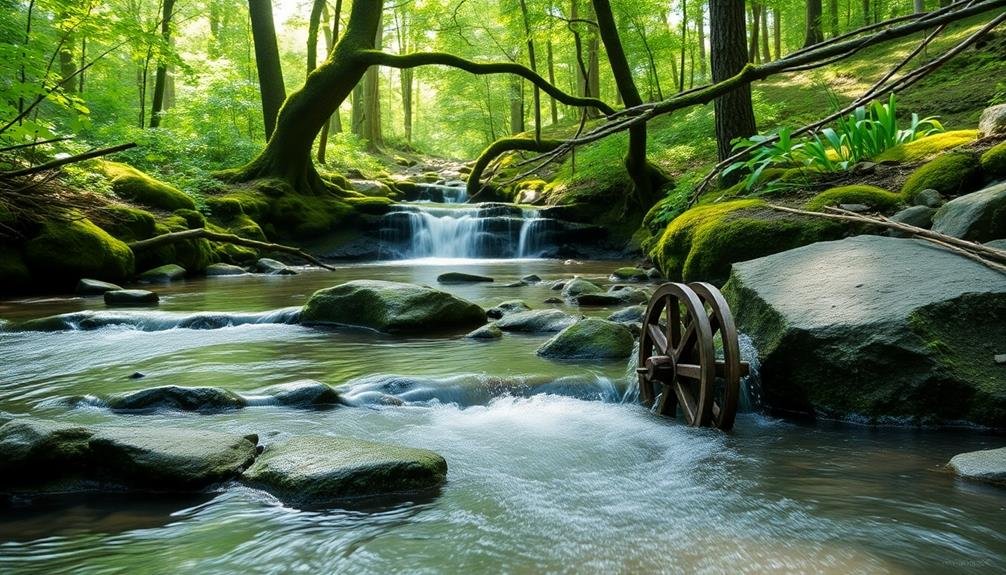
Before diving into creek-powered electricity, you'll need to assess your creek's potential. Start by measuring the water flow and head (vertical drop) of your creek. Use a flow meter or estimate flow by timing how long it takes to fill a bucket. For head, measure the elevation difference between your intake and turbine locations.
Next, calculate the potential power output using the formula: Power (watts) = Flow (liters/second) x Head (meters) x 9.81 x 0.5. The 0.5 accounts for system efficiency. This gives you a rough idea of your creek's electricity generation capacity.
Consider seasonal variations in water flow. Your creek should maintain sufficient flow year-round to meet your energy needs. Assess the creek's reliability during dry periods and whether it freezes in winter.
Evaluate the terrain and accessibility for installation. You'll need space for the intake, pipeline, turbine, and powerhouse. Ascertain you have the necessary water rights and permits. Consult local regulations regarding creek use and environmental impact.
Choose the Right Equipment
After evaluating your creek's potential, it's time to select the appropriate equipment for your hydroelectric system. The main components you'll need are a turbine, generator, and control system. Choose a turbine that matches your creek's flow rate and head. For low-head streams, consider a cross-flow or Kaplan turbine. If you have a higher head, a Pelton wheel might be more suitable.
Your generator should be sized to match the turbine's output. Permanent magnet generators are often used for small-scale hydro systems due to their efficiency and low maintenance. Don't forget to include a charge controller to regulate the power output and protect your batteries.
You'll also need piping to direct water to the turbine and a tailrace to return it to the creek. Select durable, corrosion-resistant materials that can withstand constant water flow.
Install a trash rack at the intake to prevent debris from entering your system. Consider adding a battery bank for energy storage during low-flow periods.
Install and Maintain System
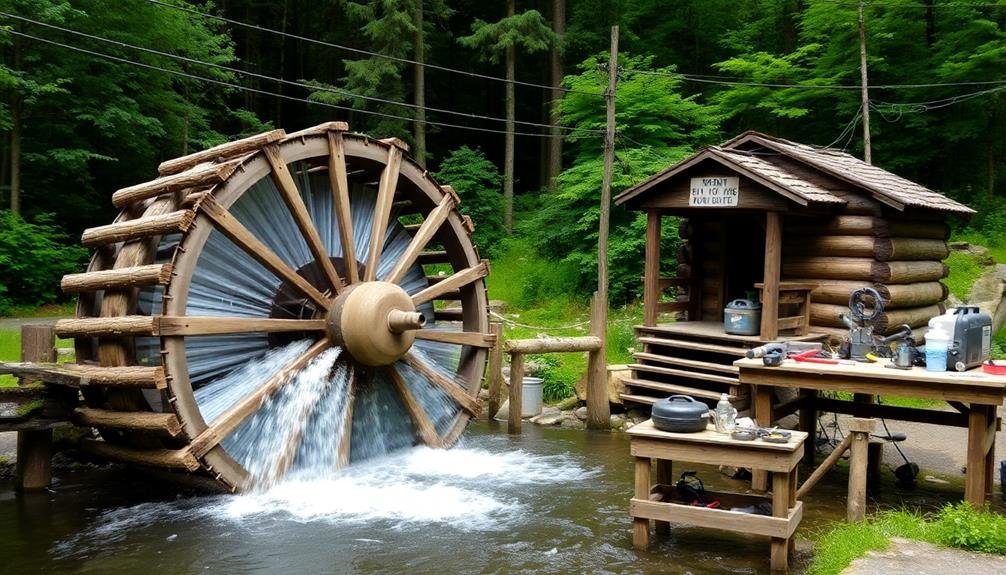
Once you've gathered all the necessary equipment, it's time to install your creek-powered electricity system.
Begin by surveying your property to determine the best location for your turbine. Look for a spot with consistent water flow and sufficient head (vertical drop).
Next, construct a small dam or diversion structure to channel water into your penstock pipe.
Install the penstock pipe, making sure it's securely anchored and protected from debris. Set up your turbine at the lower end of the pipe, ensuring it's level and properly aligned. Connect the turbine to your generator and install the electrical components, including the charge controller and inverter.
To maintain your system and guarantee peak performance:
- Regularly inspect the intake area for debris and clean as needed
- Check the penstock pipe for leaks or damage
- Lubricate turbine bearings according to manufacturer recommendations
- Monitor battery levels and replace batteries when necessary
Perform monthly inspections of all components and address any issues promptly.
Keep detailed records of maintenance activities and system performance.
With proper installation and regular upkeep, your creek-powered electricity system will provide reliable, renewable energy for years to come.
Frequently Asked Questions
How Long Does It Take to Recoup the Initial Investment in Creek-Powered Electricity?
You'll typically recoup your initial investment in creek-powered electricity within 5-10 years. The timeline depends on factors like installation costs, energy production, and local electricity rates. It's a long-term commitment with sustainable benefits.
Can Fish and Aquatic Life Be Affected by Micro-Hydro Systems?
Yes, micro-hydro systems can affect fish and aquatic life. You'll need to contemplate fish passage, habitat disruption, and water flow changes. However, you can minimize impacts through careful design and environmental assessments. Always consult local regulations before installation.
Are There Any Government Incentives or Tax Credits for Installing Creek-Powered Electricity?
Yes, you'll find various government incentives and tax credits for installing creek-powered electricity. Check with your local and state authorities, as well as federal programs like the Renewable Energy Investment Tax Credit, for potential financial benefits.
What Happens to the System During Periods of Drought or Low Water Flow?
During drought or low flow, your system's power output will decrease. You'll need to conserve energy or rely on backup power sources. Consider installing a battery storage system to help during these periods of reduced electricity generation.
How Noisy Are Creek-Powered Electricity Systems Compared to Other Renewable Energy Sources?
You'll find creek-powered systems are generally quieter than wind turbines but noisier than solar panels. They produce a consistent low hum from the generator. The sound of flowing water can mask some of the mechanical noise.
In Summary
You've now got the basics for harnessing your creek's power. Remember, evaluating your creek's potential is essential before diving in. Choose equipment that matches your creek's capacity and your energy needs. Once installed, regular maintenance will keep your system running smoothly. With these steps, you'll be on your way to generating clean, renewable energy right in your backyard. Embrace the power of nature and enjoy the benefits of creek-powered electricity in your home.

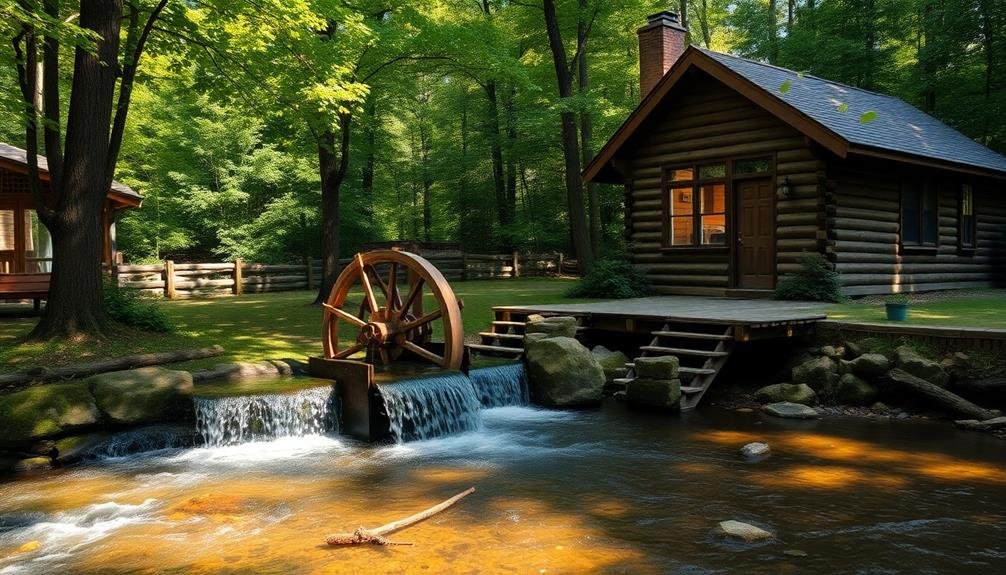
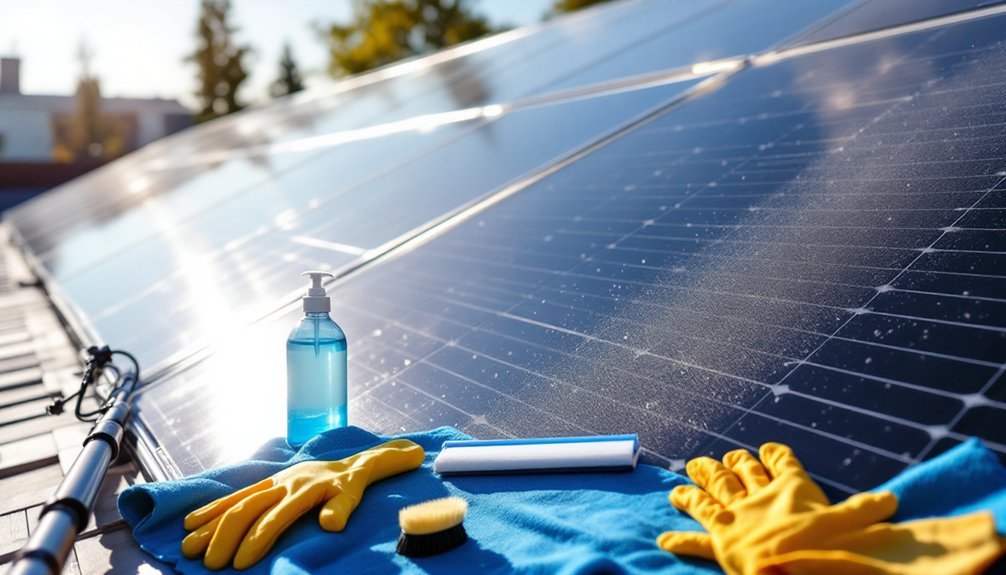
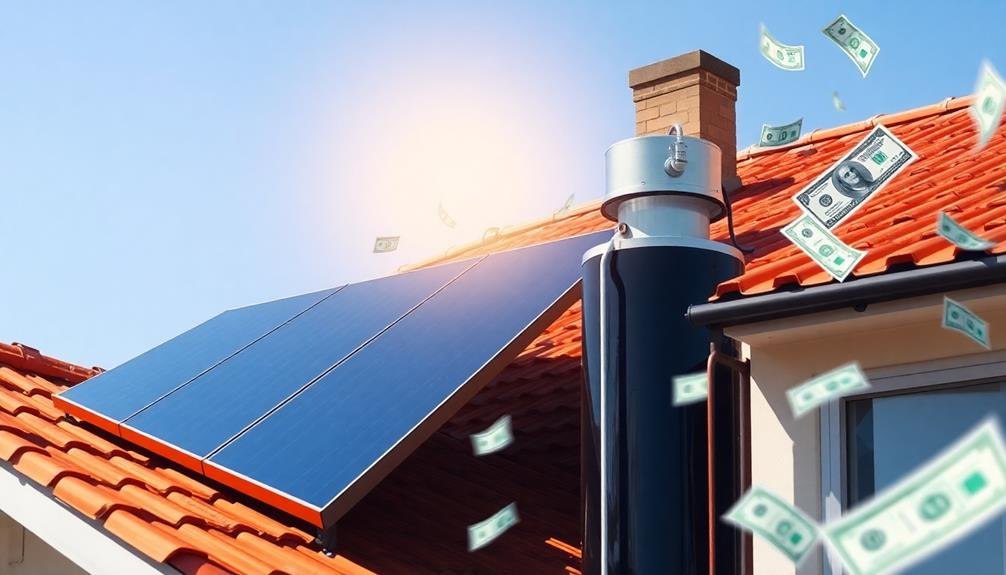
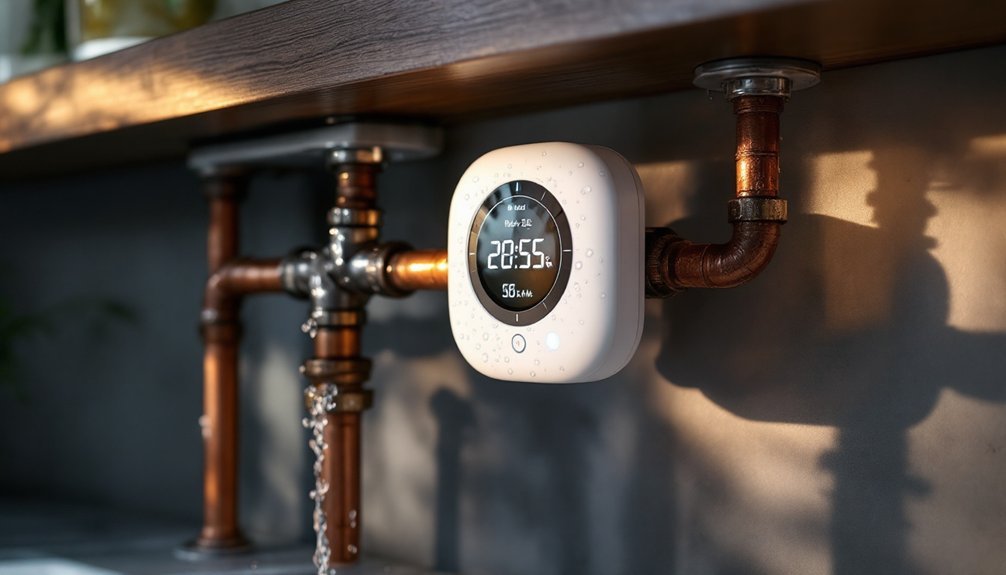
Leave a Reply